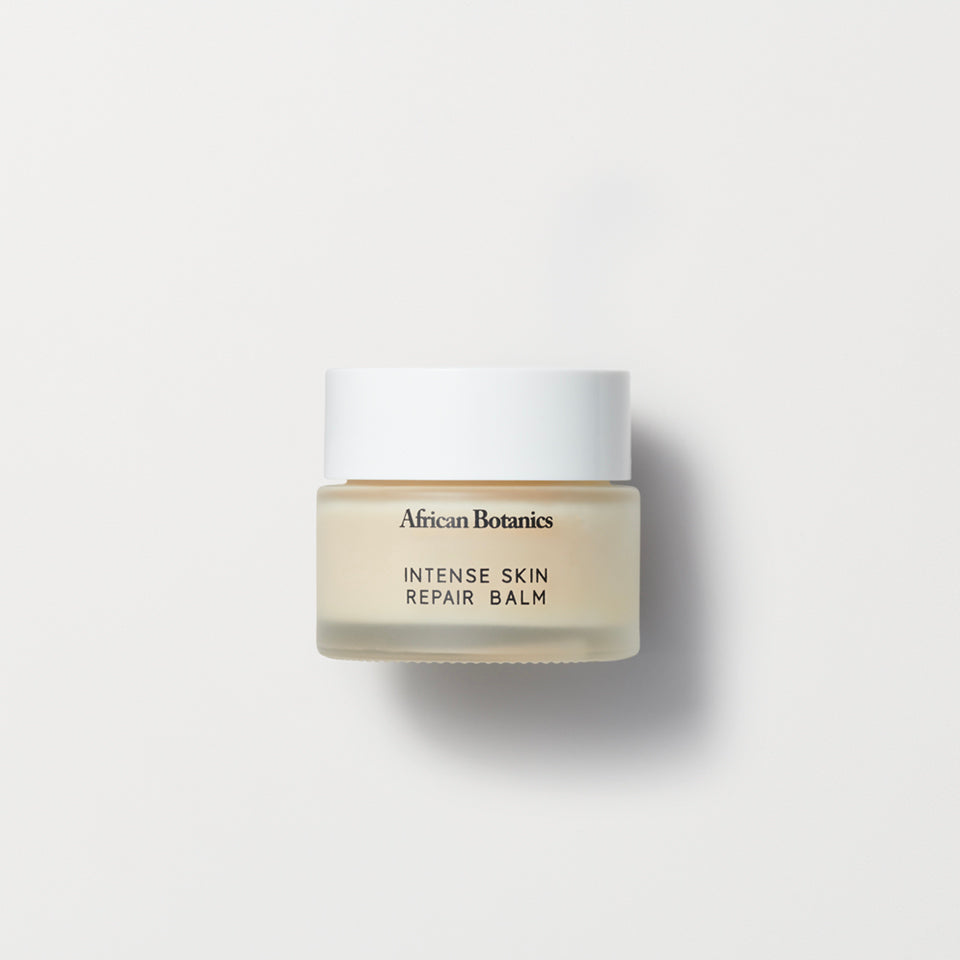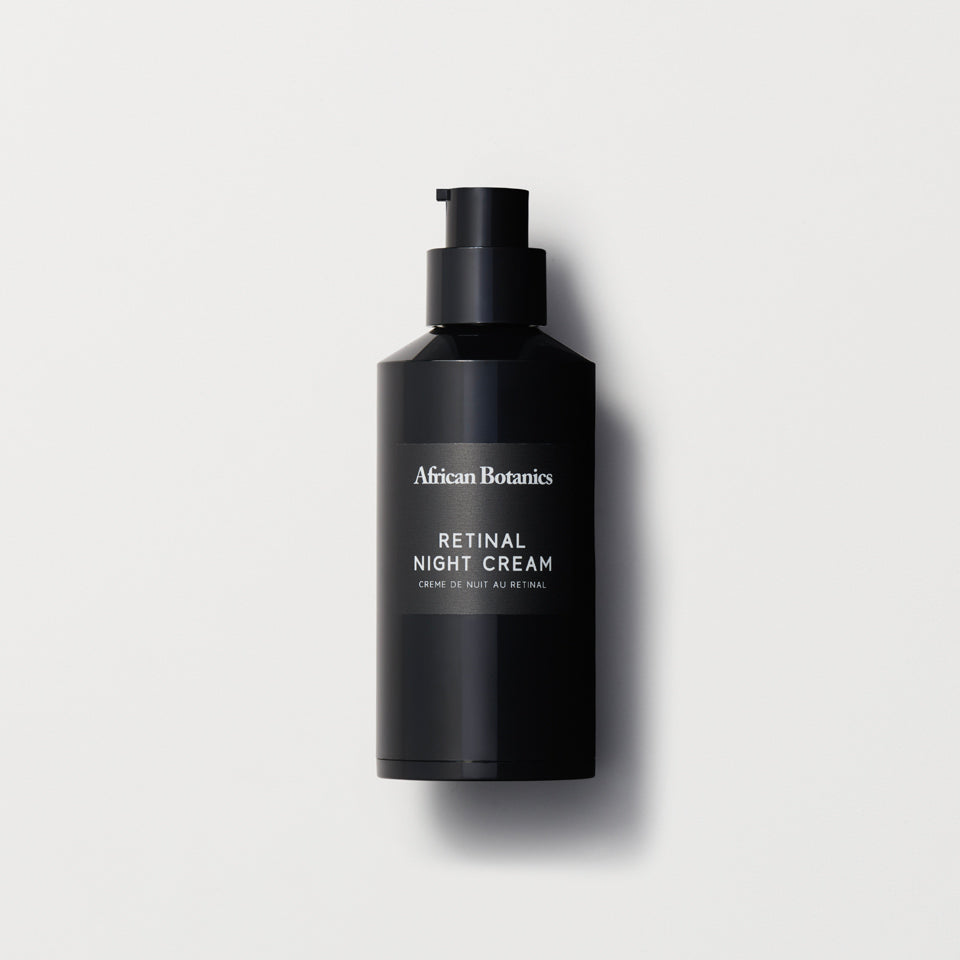
Understanding Retinol and Retinaldehyde for your skin
Retinoids - Understanding the different types of Vitamin A
With decades of scientifically-backed results, retinoids are widely considered the gold standard in skincare to address signs of aging. These compounds increase cellular turnover, stimulate collagen production, and support the thickening of the dermis. Retinoid is the umbrella term for compounds that have the same biological features as vitamin A. This family of compounds all vary in strength with the pure, most potent form being retinoic acid.

What are the benefits of Vitamin A for the skin?
• Boosts skin cell turnover
• Improves skin texture and tone
• Stimulates collagen production
• Reduces fine lines and wrinkles
• Is an effective acne treatment
• Treats post-inflammatory hyperpigmentation
Retinoic acid is the active ingredient responsible for activating the skin benefits associated with Vitamin A. Sagging, fine lines and sunspots are diminished, and texture, tone, and clarity are improved.
When applied topically, all retinoids convert to retinoic acid but not all are equal in potency.
The faster the conversion to retinoic acid, the more potent the retinoid and the results.
While the primary motivation to include a retinoid in your routine is generally to promote more youthful-looking skin, it’s an effective acne treatment too and commonly prescribed as a topical medication.
Retinoids in cosmeceutical skincare (available over the counter) or medicated prescription creams fall into 4 main categories:
• Retinyl esters: Cosmeceutical
• Retinol: Cosmeceutical
• Retinaldehyde: Cosmeceutical
• Retinoic acid: Prescription (Tretinoin, Isotretinoin)
Retinoic acid is present in prescription-only products. All other retinoids go through a conversion process, after being applied, to transform into retinoic acid in the skin.
Here we’re exploring retinol and retinaldehyde in further detail to understand how each can play a star role in your routine - particularly for those in their 30s and beyond.
While both retinol and retinaldehyde convert to retinoic acid, they do so in different ways. Let’s take a closer look at each.

Retinaldehyde
Despite the many associated skin benefits, some forms of retinoids will cause side effects of red, flaky, peeling and itchy skin when you first introduce them into your routine.
These side effects are provoked during the process of the retinoid converting to retinoic acid in the skin.
Sensitive skin, in particular, is prone to experiencing discomfort and dryness caused by retinoids. While some can surmount the hurdle of irritation during the introductory phase, most sensitive skin types simply can’t tolerate the strength of these ingredients.
This is where retinaldehyde comes in. Retinaldehyde converts to retinoic acid from topical application in a single step. This single-step conversion means it is less likely to irritate.
Retinaldehyde is gentler on the skin than other retinoids but still highly efficacious in reducing signs of photoaging. Retinaldehyde is 11 times more effective than retinol at targeting signs of aging skin and research shows it significantly improves texture, increases hydration, reduces transepidermal water loss and improves hyperpigmentation.
Retinol
Retinol is one of the most widely studied and used compounds to address aging and acne concerns.
Earning a stellar reputation for its skin-renewing abilities, retinol regulates cell turnover, encourages healthy exfoliation, plumps fine lines, and even out skin tone. It also promotes healthy hydration levels for a plump, glowing complexion.
Balancing sebum production, retinol is incredibly supportive for breakout-prone skin too; reducing inflammation and clearing pore congestion.
When converting to retinoic acid, retinol takes an additional step (compared to retinaldehyde) and is prone to triggering irritation and dryness.
Encapsulated retinol is an effective way to address the issue of irritation. This is technology which encapsulates the retinol molecules to control their release into the cells and minimizes skin disturbance.


Hierarchy of Retinoids in the African Botanics range
All skin types will find a compatible retinoid in the range; featuring as the hero ingredient or playing a supportive role.
Retinal Night Cream
Next-generation vitamin A
Ultra strength for retinol-adapted users
Retinal Night Cream targets fine lines and wrinkles, blemishes, pigmentation and uneven texture for healthy, smooth, and visibly youthful skin. The formulation is powered by retinaldehyde - an encapsulated and ultra-stabilized bio-active form of Vitamin A that gradually and effectively converts to retinoic acid in the skin.
Intensive Recovery Oil
Age-defying serum with retinol
Strength: Beginner and suited to normal, dry, combination, and unbalanced complexions
An encapsulated retinol with time-release technology is used with pure Vitamin E, Vitamin C, CoQ10, and advanced micro-algae to tackle every issue from anti-aging concerns and pigmentation, to acne and sun damage.
Resurrection Cell Recovery Serum
Night serum with retinol
Strength - Beginner to an intermediate retinoid user
This entry level gentle-strength Vitamin A serum is suitable for those who have sensitive skin or are looking to incorporate a highly effective Vitamin A serum into their routine.
Intense Skin Repair Balm
Reparative Balm - Pressed serum
Strength: Gentle - ideal for sensitive skin and compromised skin barrier
This reparative concentrated balm melts into a dense, silky serum to target wrinkles, loss of firmness, redness, hyperpigmentation and scars.
Important: Retinoids are not considered safe for use while pregnant or breastfeeding, so be mindful to pause the use of any retinoids during these periods.
Q&A: How to use Vitamin A in your skincare routine
How often can I use Vitamin A?
Start using the products with Vitamin A once every three days for the first 2 weeks. Then increase to every other day, and finally every day as your skin grows accustomed to it.
Is Vitamin A suitable for sensitive skin?
Vitamin A can be irritating, so it's best for those with sensitive skin to think about using it in moderation. It's best if you start with a lowest percentage product.
Can Vitamin A be suitable for oily skin?
Vitamin A can help with acne, so it is often recommended for those with oily or problematic skin.
Can I use Vitamin A and AHAs / BHA together?
It is not recommended to combine / layer products with Vitamin A and acids (for example, salicylic and glycolic acid). Active ingredients like acids and Vitamin A are strong and can overwhelm and irritate skin when applied at the same time. It’s best to apply acids and retinol on alternate evenings. See our Skin Cycling guide for how to do this effectively.
If you have questions about incorporating retinol or retinaldehyde into your routine with African Botanics, please reach out to our team.


